When it comes to painting rollers, you want to ensure that your purchase will be the best possible investment for your home.
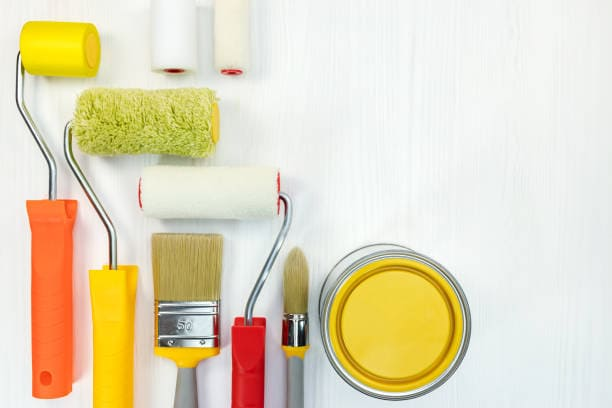
When you are looking at purchasing a paint roller, there are some essential things that you should keep in mind. For example, if you have questions about how long a roller should last or what type of paint should be used with it, then we will go through those topics in this article so that you can find the answers that you need!
Having the right tools for the job is the first step in any decorating project. Contrary to what many DIY’ers believe, not all decorating supplies are the same, and they can’t achieve the same finish. We always say to DIYers to buy the most expensive decorating tools they can afford, as they offer more durability, will achieve a much better finish and long-term companion & much better value for money than a cheap decorating tool that you will use once and a bin.
That is why it is crucial to know precisely what paint rollers are best for you. This guide will cover what to look for in a roller and the best rollers for different scenarios.
Types of Paint Rollers & their Uses
So you want to paint your house, but you’ve never done it? Don’t worry! For the DIYer, a paint roller is a must-have tool. They can help you achieve professional results without spending much money on expensive equipment.
Therefore, Paint rollers come in all shapes and sizes, but there are five main types of paint rollers, each designed for a specific purpose. There are so many different kinds of paint rollers out there because each is tailored to suit a specific job. Choose the wrong roller, and you could have a job requiring a redo.
Professional painters will know which rollers to use for their jobs, so you must get the right one for your needs.
You’ll want to understand these differences before you choose your next roller so you can make the right choice for your project. Synthetic roller covers, microfiber roller covers, top roller covers, or six roller covers?
So, which is the best paint roller? Will a small paint roller work for lightly textured surfaces, medium textured surfaces, or heavily textured surfaces? Which is a good paint roller for semi-gloss paint / semi-rough surfaces for the smoothest finish and smooth rolling movement? How much paint does a roller grab for a smooth finish, even in tight spaces? How to grab a nap roller for a smooth coat on most interior walls to avoid pain splatter & painting trim. We will discuss all these questions throughout the article to enhance your knowledge about paint rollers. Stay tuned with us.
1. Manual Paint Roller
The most common type of paint roller is a manual paint roller. These are the standard paint rollers with a simple handle, frame, and rotating metal roller typically used to paint interior smooth walls and ceilings. They can also be used outdoors to paint exterior surfaces when equipped with the right paint roller cover.
The drawback of these paint rollers is that they can be too long for painting thin surfaces like baseboards and doorframes. However, manual rollers are one of the most affordable types available.
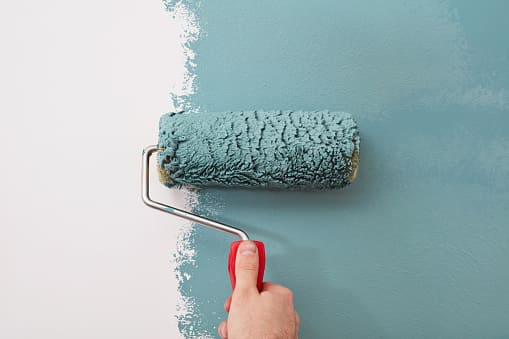
2. Pad Rollers
When it comes to painting, you have a lot of choices: roller-based, sprayer-based, and even brush-based. But what if you want something different? What if you want something that can cover darker colours with fewer strokes? Or what if you want something that doesn’t take up too much space?
That’s where pad rollers come in. While they’re still considered rollers, pad rollers do not roll. They have a flat pad that absorbs and releases the paint onto the target surface in straight, even strokes. These rollers’ design helps prevent paint splatters familiar with manual paint rollers. However, paint pads only apply a thin layer of paint to the wall, ceiling, or any other surface, so they aren’t perfect for covering darker or more vibrant colours.
3. Textured Paint Roller
You have many options if you’re looking for a way to add textured surfaces to your walls. You can use moderately textured walls paint rollers with foam sleeves or even a unique roller called a textured paint roller that has individual patterns etched into the foam.
The textured paint rollers are made with foam and have individual patterns etched in to create the desired look, though these patterns can be challenging to see on small walls on surfaces. So it’s best to use textured paint rollers on more enormous walls where the pattern is easy to see.
4. Specialty Paint Roller
A speciality paint roller is intended to create specific paint patterns. The main difference between the two types is that speciality paint rollers are not just manual paint rollers with innovative roller sleeves. These are specialized tools designed by the manufacturer for specific textured paints. You don’t need to use these rollers to paint walls with textured paint, but you may get better results with the specialized tool over a more general-use textured paint roller sleeve.
5. Mini Paint Roller
The mini-paint roller is the way to go if you’re looking for a small, lightweight roller for thin surfaces or tight corners. These rollers come in various sizes, including 2-inch, 3-inch, 4-inch, and 6-inch, allowing you to select the correct length based on the project’s needs.
Some mini rollers are used with small-diameter mini hot dog roller sleeves. The reason they are referred to as mini hot dog rollers is that with their small diameter and short pile height, they resemble mini hot dogs. The thin roller sleeve is ideal for painting in tight corners and difficult-to-reach places, like behind the toilet.
Choose the Appropriate Roller Nap
If you’re looking for the right paint roller for your next DIY project, you need to know the nap length on each roller.
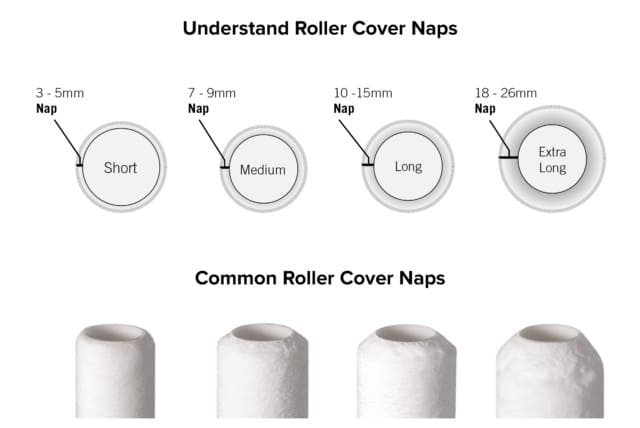
The “nap” refers to the length and style of the material on a paint roller. When you buy a pack of rollers in a store for a DIY paint job, you will see that they have various lengths and other information to help you make the right decision. But if you haven’t used rollers often, you may not be sure what kind to buy. This section will help you choose the correct paint roller nap for your project!
Types
. 3/16-inch or ¼-inch
It’s no secret that short naps are the best kind of naps. These are usually the shortest naps available and look very compact and flat. Naps like these are designed to spread paint very efficiently across surfaces, so less paint is used, and the job goes faster. However, they’re only efficient for mainly flat surfaces. That includes untextured plaster, sanded wood that’s smooth to the touch, and drywall that isn’t too bumpy. This inch roller will remove rough surfaces/semi-smooth surfaces.
. 3/8-inch or ½-inch
If you have a lot of texture on your walls, you should consider buying a longer nap paint. These thicker naps are a better choice for surfaces with more texture. This means that every flat nap may not be able to get paint into all the little crevices, leading to unsightly mottled appearances.
This longer nap can hold and apply more paint: While not as efficient, it’s excellent at ensuring that slightly rough surfaces get a proper coating. That includes smooth concrete, most types of drywall, relatively flat wood, many types of acoustic tile, and so on.
If you are painting the interior of your home and aren’t sure what nap type to get, this is usually the best option for the average in-home drywall and similar surfaces.
. ¾-inch or 1-inch
If you’re having trouble getting your nap length to work for your project, try a long nap length.
You might be surprised by how much better it works on rougher surfaces than usual. For example, even average-sized nap lengths can have trouble getting into every surface, even with a second pass. For these surfaces, a longer nap is usually required for practical work. These lengths are perfect for surfaces like textured plaster, which can look beautiful but also has sharper edges and contours that need a long nap. It’s also a good choice for bumpy stucco, rougher concrete, and woods that haven’t been sanded down for interiors, like decks or fences.
. 1 ¼-inch or 1 ½-inch
These naps are not for the faint of heart. They’re huge and very rough, so you must know what you’re doing if you want to use them. But if you’re looking for a way to add extra texture to an exterior or wall that needs more character than usual, these naps could be just what you need.
One example is brick. Brick contains many deep indentations that must also be painted. As you can imagine, most of the surfaces fit for these naps are exteriors made from rough materials.
Painting Techniques with a Paint Roller
You’ve got a paint job coming up, and you’re wondering what kind of roller to use. Don’t worry! Here are some tips to help you get the perfect finish on your next project.
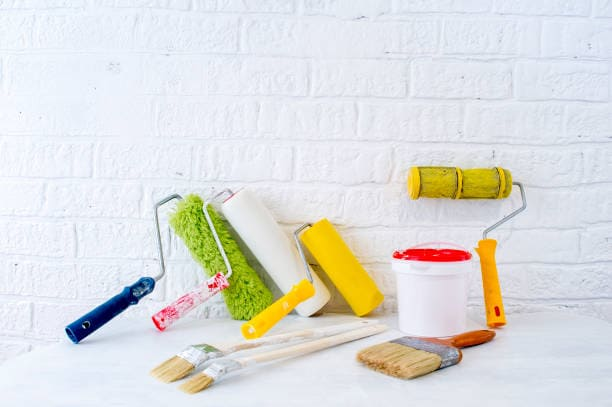
Roller Needs
1. To use a roller, you’ll need a tray, frame, roller cover and possibly an extension pole. Make sure you have the right roller for the job. Generally speaking, 6-8mm nap covers are used for gloss and semi-gloss paints, 10-12mm nap covers for low sheen and flat paints on walls and 20-32mm for most paints on rough surfaces such as concrete or textured walls.
Surface Considerations
2. Line up your surface with the roller cover facing down, so there’s no chance of water getting underneath it when you’re painting. Then place one edge of the frame against the wall, so it’s level with your top edge (and don’t forget about any gaps!). This will allow you to work efficiently without moving around too much whenever you need to reach something higher up!
Roller Cleaning
3. Make sure your roller is clean before using it again—you don’t want any dirt from previous jobs getting trapped inside, which could cause build-up when applying paint again later.
Cleaning and Storing Your Paint Roller
If you’re looking for a professional finish on your paintwork, you must ensure you start with the right tools.
We know sometimes it can be challenging to know what will work best for your project. And we also know that getting in touch with a trader is a big step—but it’s one you should take.
That’s why we’ve partnered with Which? Trusted Traders and helped them identify traders that we endorsed. By using these traders, you can be sure they have the skills and knowledge to get the job done and go through our assessment process to make sure you can find an approved trader close enough to home for you.
But if this isn’t an option (and let’s face it, sometimes life happens), we’ve got some advice on cleaning your brushes and rollers, so they’ll last longer and give you a better finish than before.

Remove any excess paint.
Once you’ve finished using your paintbrush, squeeze the bristles against the edge of the paint-can lip to draw out as much moisture as possible.
Then wipe away paint from brushes or rollers using an old cloth or newspaper.
Clean water-based paint
You can remove water-based or non-oil-based paint (emulsion) with warm, soapy water. Use rubber gloves to protect your hands. To avoid staining your kitchen or bathroom, consider containing the soapy water in a jam jar, paint tray or similar rather than using the sink directly.
Clean oil-based paint
The best way to clean oil-based paint is with elbow grease, a few cups of white spirit and some rubber gloves.
First, fill a large container—such as an old jam jar—with white spirit. Swirl the brush around in it until all the paint comes off. You’ll want to wear gloves to protect your hands from the acid in the solution, but not all that much more. A roller will need a larger container—ask a hardware store for advice on what size you need.
Refresh the solution if necessary, continuing until all the paint is removed. Keep the used white spirit in the container—after a day or two, the paint will settle to the bottom of your solution, and you can reuse it for another cleaning job!
Rinse & Dry
It’s important to rinse your paint rollers under a tap to remove as much paint as possible until the water runs clear. This will prevent foam from getting stuck in the paint, which can make it challenging to use. Pat them dry with a kitchen towel or clean old clots!
Time to Storing Rollers
Once you’ve cleaned your rollers carefully, ensure they’re ready to use for the next project. Once your roller head is dry, you can put it in a plastic bag to keep it clean.
When you’re finished with a project, be sure to store your paint roller kit that includes (a foam roller cover, paint brushes, paint roller frames, paint roller nap, foam, foam roller, painting tools, paint roller frame, inch nap, foam rollers, paint roller covers, etc.) heads in a dry place, so they don’t get damaged before your following paint projects.
A Good Paint Roller Always Does the Perfect Job for You
So, a paint roller always does the perfect job for you if you’re familiar with its usage. The job will be easy if you know the proper paint roller nap for smooth surfaces, rough exterior surfaces, or an excellent smooth paint finish. The DIY paint job will be challenging if you don’t know which inch roller framework is for oil-based paints or latex paint, and as a result, there will be paint splatter everywhere. So, an appropriate paint kit will be your perfect companion in your next DIY project.
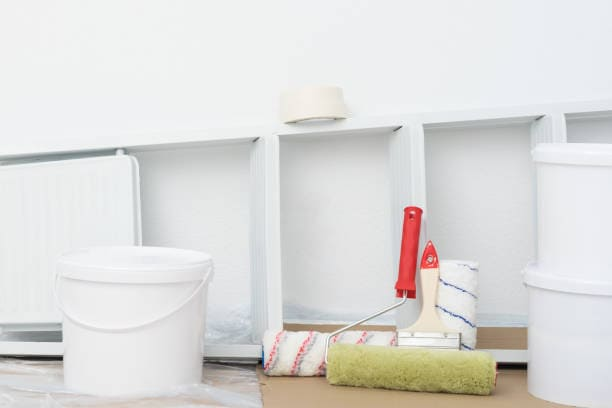
Paintbrusha supplies a wide range of paint rollers that cover all DIY and professional painters. We also provide private label services regarding your products too. Just browse our product selection and contact us today to start your project. We are glad to serve you!
